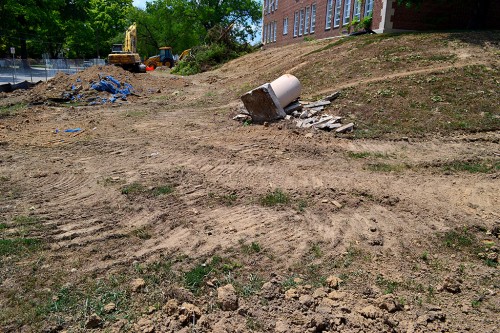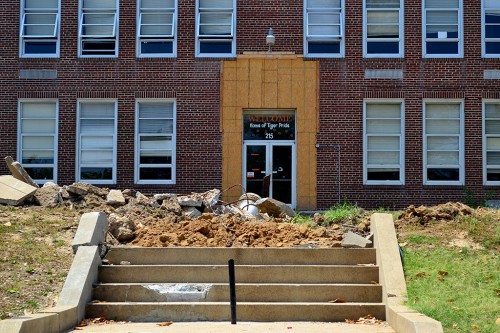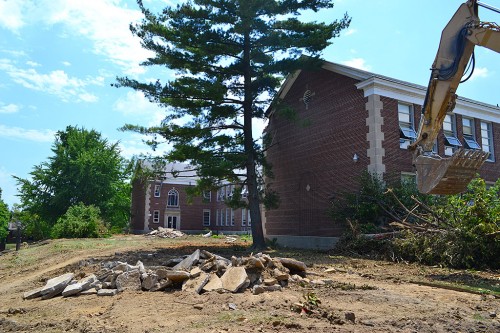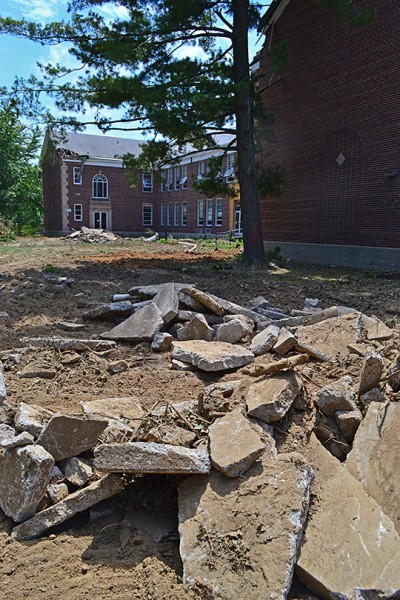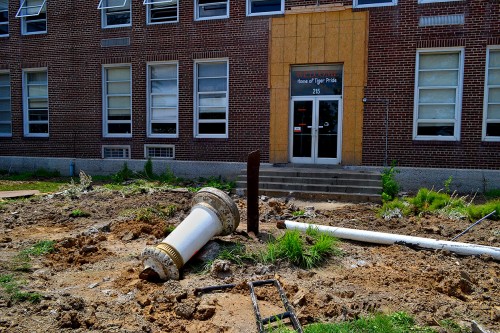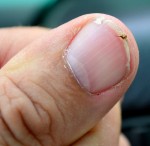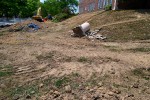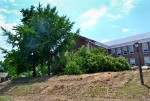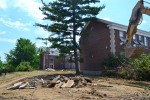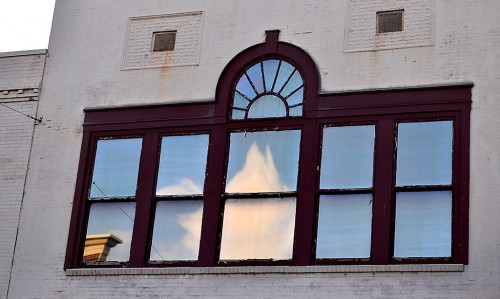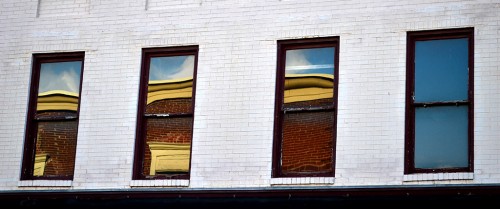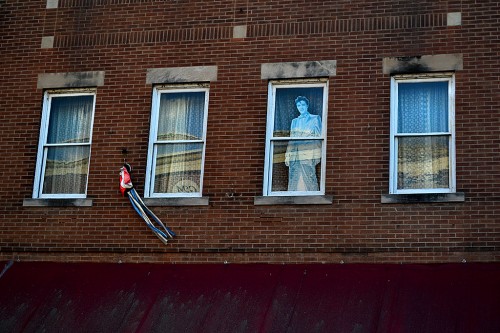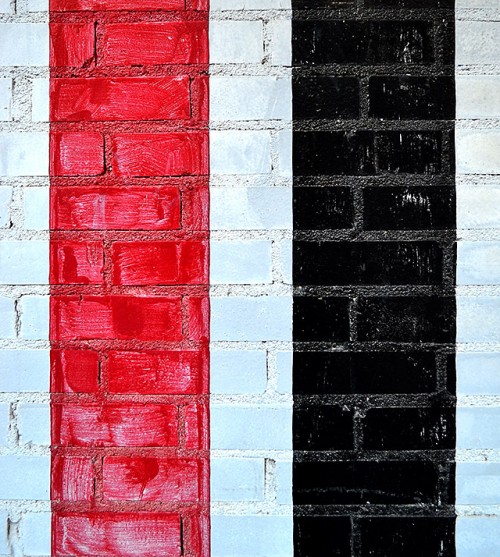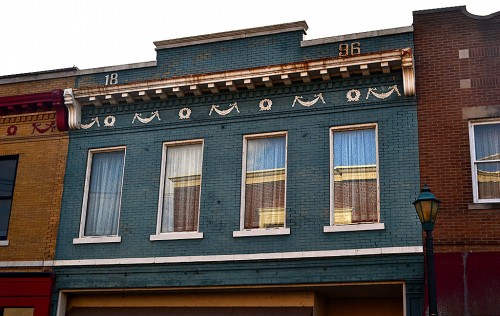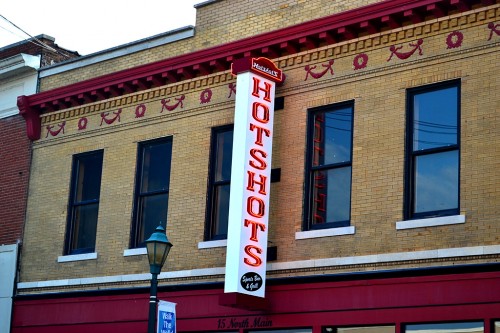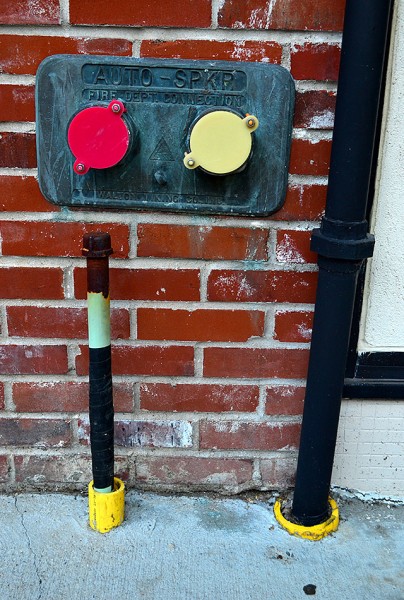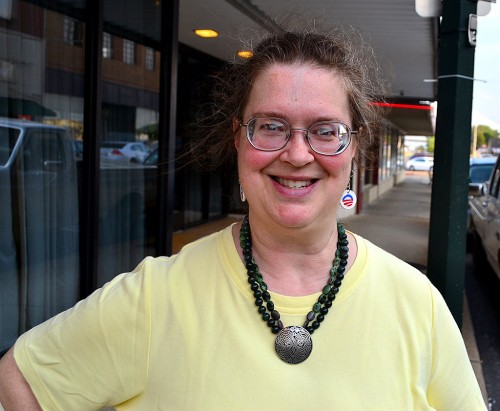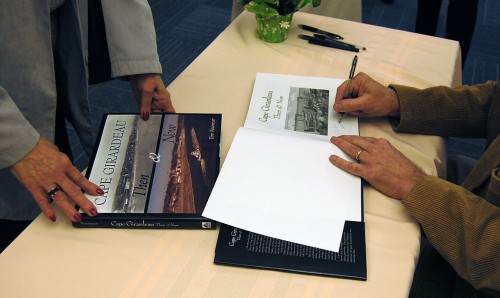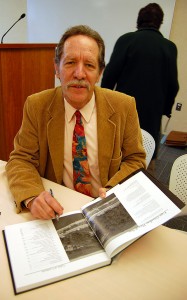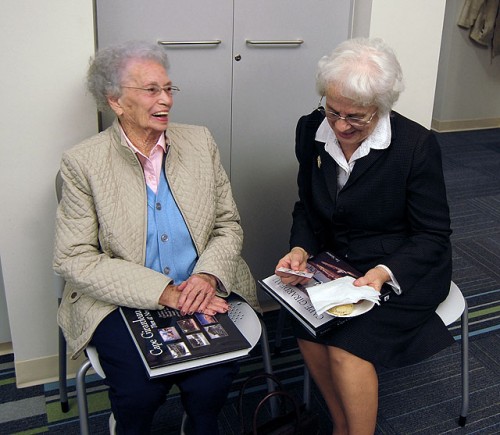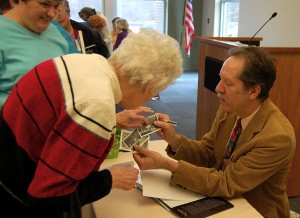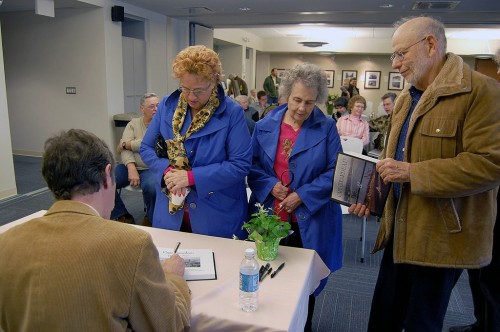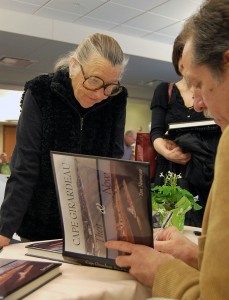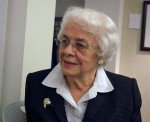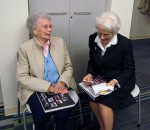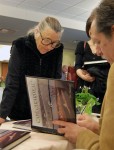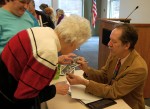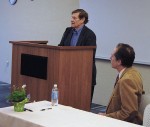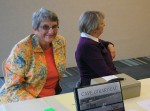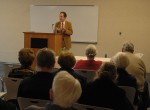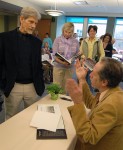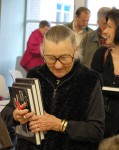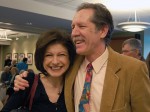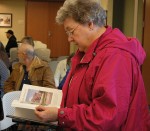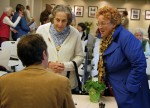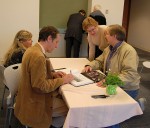See that DONATE Button at the top left of the page? You folks owe me. I took one for the team Wednesday afternoon at Franklin School.
A couple of Facebook friends posted that demolition of the old school had started, so I figured I’d better get over there before it was too late. I saw a story in The Missourian that said that workers had hit a snag when they stirred up some honeybees. One worker had to be taken to the hospital and a beekeeper was brought in to deal with the situation.
What happened to Ben Franklin?
I had something else I could shoot to let things cool down, so I didn’t get to Franklin until early afternoon. The job site was quiet. No equipment was working and no workers were around. I held my camera over the fence to take a photo of the ripped-up pedestal where Benjamin Franklin, the school’s namesake, used to stand at the southeast corner of the campus. (I wonder if he was salvaged.)
Steps and sidewalk coming out
Then, I wandered to the front of the school to take some shots of the steps where it has been said that some introductory biology classes had been offered. Class looks like it has been dismissed for good.
I read somewhere that the facade around the front door had been preserved. It’s a little ironic because Franklin was the only school in the city that had been built without a name.
Better to ask forgiveness…
I saw an open gate on the north side of the school. An open gate to me means an invitation, so I walked into the parking lot to see an open supply trailer and a couple of trucks. My intention was to find the foreman to get permission to walk around the site since there was no work going on, but I couldn’t find anyone.
Since there was no one to ask, and because I was already there, I opted to observe the “it’s better to beg forgiveness than to ask for permission rule.” I REALLY wanted to see if they had preserved the old flag pole.
Bees and rattlesnakes
I had just taken the first photo of it being on the ground when I saw a dark object buzzing around my nose. “This isn’t good,” I thought. Just about that time, I felt somebody stick a red-hot poker onto my lip.
 I knew that feeling. In the mid-70s, on the way back from covering a trucker strike in Georgia and Alabama, I read that Whigham, Ga., was holding a rattlesnake roundup. I called the office, told ’em I’d be on the road another day
I knew that feeling. In the mid-70s, on the way back from covering a trucker strike in Georgia and Alabama, I read that Whigham, Ga., was holding a rattlesnake roundup. I called the office, told ’em I’d be on the road another day
I soon found myself wandering around a Georgia pine forest on a chilly foggy morning with a guy who said the unusually warm weather was keeping the snakes above ground instead of curled up in gopher turtle burrows. (My new buddy would stick a long plastic pipe down the gopher hole, pour down a couple of ounces of gasoline and wait for the fumes to drive the snake to the surface. They weren’t home, unfortunately.)
Since they were on top of the ground, that meant the snakes had as good of a chance of finding us as we did of finding them. I finally got a shot of him draping a four-foot rattler around his neck, and we headed back to the snake pen where the hunters dumped their catches (live and very unhappy, by the way) into a fenced-off area. They were destined for skinning and being eaten.
I was invited into the area. Much against my better judgement, I stepped into the pen. I was assured that rattlers can’t strike longer than their length, so I was “perfectly safe.” I was concentrating on (a) trying to figure out how long my subject was (and adding a couple of feet for safety), and focusing on his flickering tongue when I felt that red-hot poker hit my thumb.
Dead in Whigham
“This boy is dead,” I thought. “Somewhere in the back of Editor & Publisher, the journalism trade magazine, my passing will be dutifully noted: ‘Ken Steinhoff, Palm Beach Post director of photography, died in the line of duty. He wasn’t covering a war; wasn’t trapped in a burning building trying to save an old woman’s Cocker Spaniel; didn’t sacrifice his life pushing a child out of the path of a speeding auto; no, he died of stupidity by stepping into a pen of unhappy rattlesnakes in a nowhere town in Georgia.'”
I found out to my chagrin, surprise and pleasure that I was not dead: that I hadn’t tangled with a rattlesnake, but had stirred up a nest of ground wasps. Still, I decided that the photographs I had taken in the pen were sufficient for my needs and exited quickly.
Back to Franklin
The bee had friends
After the red-hot poker to the lip, I noticed half a dozen other buzzing objects starting to circle my head. Having read that having one bee sting someone will sometimes set the whole hive into a frenzy, I took two more frames and walked quickly and calmly back to my car. I yanked the stinger out of my lip, taking some small satisfaction in knowing THAT bee isn’t going to sting anybody else. (The tiny object at the end of my thumbnail is the stinger.)
 Sister-in-law Marty Riley lives a few blocks away from the school, so I stopped by her house to get some ice for a rapidly swelling lip. She, unfortunately, wasn’t home.
Sister-in-law Marty Riley lives a few blocks away from the school, so I stopped by her house to get some ice for a rapidly swelling lip. She, unfortunately, wasn’t home.
I decided drop by The Missourian to see librarian Sharon Sanders, figuring that if I went into apocalyptic shock and fell twitching on the floor Fred Lynch, could shoot a picture of me, filling his spot news quota without leaving the office. Photographers stick together.
One final bee story: my only Workers Comp claim as a photographer came from a bee-related incident. When I got back to the office, I dutifully filled out H.R.’s Description of Injury form: “I was assigned to photograph what was supposed to be 14 million dead bees. The beekeeper wanted to show me his 14,000,000 bee loss, so he kicked the hive apart. 13,999,999 bees were dead. One was not.”
Stings more than the bee
I didn’t go to Franklin, so I shouldn’t have any strong feelings about the school. Still, seeing the flag pole on the ground gave me a feeling of loss. I wondered how many proud youngsters had raised and lowered the flag on that pole. I could hear the sound of the metal clips that secured the flag to the halyards banging against the pole on a windy day.
I also thought of how this flag pole and base was a mirror image of one I photographed in front of Washington School before it was torn down. They could save a few pieces of facade, but not a classic flag pole.
Photo Gallery of Franklin School
I wish I had more photos, but you guys don’t pay enough to keep me shooting with bees swarming around. Click on any photo to make it larger, then click on the left or right side of the image to move through the gallery.


